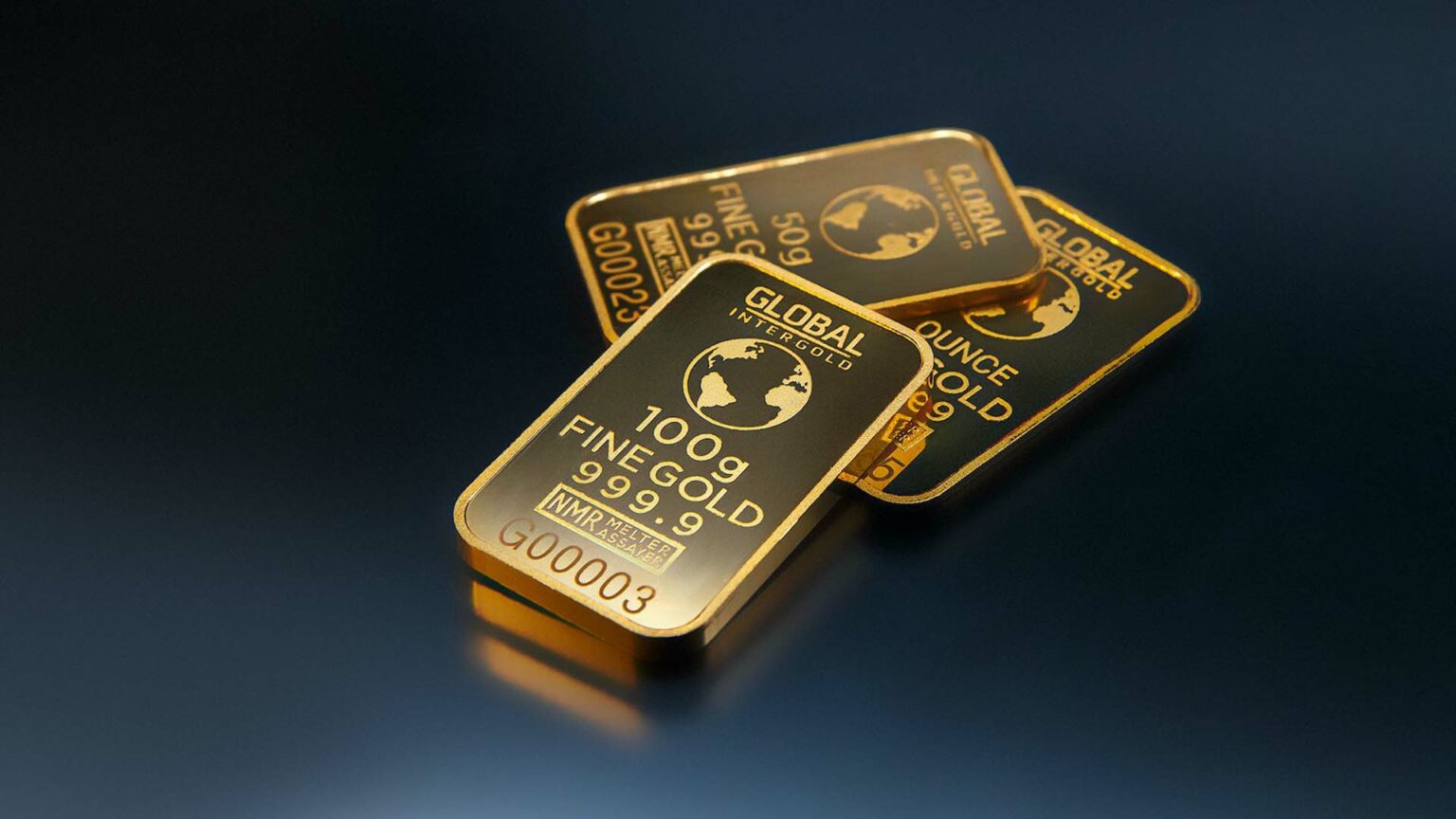Trending: Here are some Business Statistics and Trends to know
|
Getting your Trinity Audio player ready...
|
In today’s economy, many investors are looking for alternative ways to diversify their portfolios and secure their retirement savings. Gold has been a trusted investment for centuries and continues to hold its value even in uncertain economic times.
If you’re interested in investing in gold for your retirement, a Gold IRA may be worth considering. But what is a Gold IRA?
In this article, we’ll take a closer look at this special type of Individual Retirement Account (IRA) and how it works. We’ll also explore the benefits and potential drawbacks of investing in a Gold IRA, so you can determine if it’s the right choice for you.
So grab your golden ticket and let’s get started!
What Is A Gold IRA?
A Gold IRA is an Individual Retirement Account (IRA) that allows you to invest in physical gold, silver, platinum, and palladium. These precious metals can be stored in a custodian’s vault or your safe deposit box.
Gold IRAs are attractive for investors looking to diversify their retirement portfolios and shield them from inflation. However, there are a few things to keep in mind.
Firstly, investing in gold isn’t a get-rich-quick scheme – it’s not as liquid as stocks and bonds and its value may fluctuate over time.
Secondly, your custodian will likely charge annual fees for the storage and administration of the account.
Finally, you should ensure that the company you choose is IRS approved and offers specialized services related to gold IRAs. With these considerations in mind, gold IRAs are an effective way to store wealth long-term for investors who understand the risks involved.
Types of IRAs
There are two main types of IRAs: Traditional and Roth.
With a Traditional IRA, investors can contribute pre-tax dollars, allowing earnings to grow tax-deferred. Distributions from the account are taxed at retirement age. On the other hand, contributions to a Roth IRA are made with after-tax money, meaning there is no immediate tax advantage.
Both types of IRAs offer investors an opportunity to diversify their retirement portfolio and protect their savings against inflation. Investors need to consider factors such as storage fees and annual administration costs associated with maintaining the account before deciding on investing in gold.
Are Gold IRAs a Good Idea?
Investing in gold IRAs (Individual Retirement Accounts) can be a smart financial move, but it depends on an individual’s investment goals and risk tolerance. Gold IRAs can offer several benefits that other retirement investments may not, such as diversification and protection against inflation and economic uncertainty.
Adding gold to your retirement portfolio can help diversify your holdings and reduce overall risk. Gold often behaves differently than other assets such as stocks, bonds, or real estate, which means it can provide a hedge against economic volatility. This is particularly important during times of uncertainty when traditional investments may be struggling.
However, it’s important to note that gold IRA investing comes with its own set of risks. The value of gold can fluctuate dramatically, and it’s not a guarantee that it will increase in value over time. Additionally, gold is considered a long-term investment, and investors should not expect to see significant returns in the short term.
Overall, it is recommended that individuals allocate a small percentage of their retirement assets to gold IRAs. This ensures that they have a well-diversified portfolio that can withstand market fluctuations and provides some level of protection against economic uncertainty.
Before making any investment decisions, it’s always a good idea to consult with a financial advisor to determine if gold IRAs are a good fit for your investment goals and risk tolerance.
Risks of Gold IRAs
Investing in gold through an IRA may not be the best option for everyone. Gold doesn’t pay dividends, has no earnings, and has to be stored, which could make it less appealing to some investors. Though it is widely believed to be a haven asset in times of economic turmoil, most of it is sitting in bank vaults or safety deposit boxes.
Despite this, gold has seen some significant price fluctuations over the years. From the early 1980s until around 2006, gold remained in the $300 to $500 per ounce range. It then spiked to over $1,700 per ounce after the 2008 financial crisis, but later fell back to the $1,100 to $1,300 range. During the summer of 2020, gold reached an all-time high of over $2,000 per ounce due to the coronavirus pandemic, but its price has since dipped below $2,000. As of early 2023, the price of gold remains bullish, hovering around $1,900 per ounce.
Gold can indeed perform well during periods of financial uncertainty and market volatility. However, it’s important to keep in mind that over the long term, gold has not always been the best investment choice. Between 1980 and 2006, for example, an IRA would have generated greater returns by investing in the broad stock market in addition to gold. During this period, the S&P 500 generated an average annual return of 14.49%, while gold remained relatively stagnant.
All of this isn’t to say that investing in precious metals is a bad idea. They can have a place in a diversified portfolio. However, when compared to the overall economy as measured by the broad markets, gold may have a long way to go to match their returns.
Custodians Manage Your Gold IRA
Large, conventional brokerage firms do not offer gold IRAs. Instead, you need to work with a custodian that specializes in administrating gold IRAs. These custodians can help you manage the paperwork and tax reporting for your gold transactions to meet the IRS requirements for retirement planning.
One of the most critical services offered by custodians is managing the unique storage needs involved with holding physical gold bullion. The IRS prohibits the personal storage of precious metals owned via a gold IRA at home. If you take personal control of the physical gold from a self-directed IRA, the IRS counts it as a withdrawal.
This makes you potentially subject to taxation and early withdrawal penalties, and in some cases, the IRS is authorized to shut down your entire account.
Gold IRA rules require that you store eligible precious metal with a national depository, a bank, or a third-party trustee approved by the IRS. Your custodian can refer you to an approved facility and handle the gold transfer as part of setting up your gold IRA. This is an essential aspect of holding a gold IRA because it ensures that the gold remains safe and secure, protecting the value of your investment.
How Much Can You Put in a Gold IRA?
Investing in a gold IRA involves a few key considerations. To purchase physical gold for your gold IRA, you’ll need to fund it by transferring cash into the account. One option is to roll over an existing retirement account to your self-directed IRA. Another option is to deposit cash each year, following the annual IRA contribution limits.
It’s important to note that traditional custodians like conventional brokers don’t offer specialty accounts like gold IRAs. Therefore, you’ll need to find a specialty custodian or firm that can handle the documentation and report necessary to maintain a gold IRA. You’ll also need to follow the same rules as traditional IRAs, which include staying within annual contribution limits and complying with distribution regulations when making withdrawals.
When it comes to investing in a gold IRA, there are contribution limits that you need to keep in mind. In 2022, the maximum amount you can contribute to a gold IRA is $6,000, and in 2023, it is $6,500. If you are aged 50 or above, you can contribute an additional $1,000 for both 2022 and 2023. It’s important to note that these contribution limits apply to both traditional and Roth IRAs, not just gold IRAs.
It’s worth noting that contribution limits are subject to change based on inflation and other factors. It’s always a good idea to check with a financial advisor or a custodian to ensure that you’re contributing the maximum allowed amount to your gold IRA. It’s also important to remember that contribution limits apply to your total IRA contributions across all of your accounts, including any traditional or Roth IRAs you may have.
Storage is another important consideration for those holding gold IRAs. Physical gold must be kept at an IRS-approved facility, such as a bank or depository, or with an approved third party. You cannot store your assets at home, as it counts as a withdrawal and incurs taxes.
Investing in gold can potentially diversify your retirement portfolio and serve as a hedge against inflation and market volatility. However, it’s important to do your research, understand the risks and benefits, and consult with a financial advisor before making any decisions.
Gold is generally considered a hedge against inflation and allows investors to diversify their portfolios. By adding gold to your retirement portfolio, you can potentially increase your portfolio’s resilience to market volatility and economic downturns. However, as with any investment, it’s important to do your research, understand the risks and benefits, and consult with a financial advisor before making any decisions.
What Forms of Gold Can You Own in a Gold IRA?
The IRS has specific guidelines regarding the types of physical gold that are eligible for purchase in a gold IRA. Specifically, you can only buy gold bars that are at least 99.5% pure.
Additionally, a variety of gold coins are permissible for purchase, including the American Gold Eagle, the American Buffalo, the Canadian Maple Leaf, and the Australian Gold Nugget/Kangaroo coins, among others.
It is important to note that while these coins are approved for gold IRAs, there are additional rules that must be followed, such as ensuring that the coins are uncirculated and that their purity levels meet the minimum requirements.
It is recommended that you consult with a financial advisor or custodian to ensure that you are following all IRS guidelines when purchasing gold for your gold IRA.
Certain Collectable Coins and Collectibles Are Not Allowed in a Gold IRA
The IRS has strict rules regarding the types of gold that can be held in a gold IRA. While you can purchase gold bars that are at least 99.5% in purity, there are only a few gold coins that are allowed, including the American Gold Eagle, American Buffalo, Canadian Maple Leaf, and Australian Gold Nugget/Kangaroo coins.
However, some popular gold coins like the South African Krugerrand or the United Kingdom Sovereign coins are not permitted in a gold IRA. Additionally, it is not possible to invest in gold collectibles with an IRA.
Before moving gold into your IRA, it’s important to review the list of permitted gold objects with your custodian to ensure that you are not making an improper transaction. If you accidentally invest in a disallowed gold object, the IRS will disallow it and treat it as a withdrawal. This means that you would owe income tax on the value of the item, and if you are younger than 59 ½, an additional 10% early withdrawal penalty.
Gold IRAs Charge Extra Costs
Investing in a gold IRA involves additional custodian fees that you would not have with a traditional IRA. You can expect to pay account setup fees, annual maintenance fees, seller fees, storage fees, insurance fees, wire transfer fees, and cash-out fees.
Account setup fees.
The account setup fee is a one-time fee that custodians charge to launch your account, and it can range from $50 to a few hundred dollars. However, some custodians do not charge an account setup fee, especially if you make a larger deposit, such as $30,000 or more.
Custodian annual maintenance fee.
The custodian’s annual maintenance fee covers the administrative expenses of overseeing your account and handling the paperwork. This fee could be a flat fee of $75 to $300 per year. Some companies also charge more for larger accounts, like $175 if you have less than $100,000 and $225 for over $100,000.
Seller fees.
When buying physical gold for your IRA, the seller could charge a markup, meaning you would be paying more than the spot market price of the gold. The seller could also charge commissions and fees for handling the transaction, which is typically around $40 per transaction.
Storage fees.
Gold owned in a gold IRA must be stored in a secure location, and the more gold you own, the higher the storage fee. The storage fee may be a flat rate or a percentage of the value of your account.
Insurance fees.
Custodians may lump gold insurance charges together with the storage fee, charging one flat rate, or break it out separately. Depending on how much gold you hold, storage and insurance could cost between $100 to $300 a year.
Wire transfer fees.
If you send or receive money by wire transfer for your transactions, the custodian may charge a fee to cover the cost of around $25 per wire.
Cash-out fees.
If you close your account, the custodian may charge a final cash-out fee of around $250.
New customers may be able to have some of these fees waived for the first two to three years, especially if they have a larger account balance. However, even with larger accounts, you could still face extra charges that you would not incur if you held your money in a standard IRA. It’s essential to consider these fees before investing in a gold IRA.
You Don’t Need a Gold IRA to Invest in Gold
Investing in a gold IRA isn’t the only way to incorporate gold into your retirement savings. There are simpler and less expensive ways to save for retirement with gold.
For instance, you can invest in gold stocks, such as shares of gold mining companies or gold royalty companies. When the price of gold increases, these firms become more profitable, and as a result, their share prices usually rise as well.
Another option is to buy a gold ETF or a gold mutual fund. These funds purchase a basket of gold-related investments, such as stocks in different gold mining companies. Some funds directly track the spot price of gold using futures trading strategies. These investments are available in a regular brokerage IRA, so you don’t have to go through the effort and extra costs of setting up a self-directed gold IRA.
If you prefer owning physical gold itself, you will need a self-directed gold IRA. However, before opening one, you should consider that it charges a range of additional custodian fees that you wouldn’t owe on a regular IRA.
Such fees include account setup fees, custodian annual maintenance fees, seller fees, storage fees, insurance fees, wire transfer fees, and cash-out fees. Even with larger accounts, you could face additional charges that you wouldn’t incur if you held your money in a standard IRA.
The Bottom Line
In conclusion, a Gold IRA offers investors the opportunity to invest in physical gold, silver, platinum, and palladium within an individual retirement account. This investment vehicle is similar to a traditional IRA, but with the added benefit of holding precious metals as a potential hedge against inflation and economic uncertainty.
It is important to keep in mind that specific rules and regulations are surrounding Gold IRAs. For example, the IRS has strict guidelines about the types of gold that can be held in the account. Furthermore, Gold IRAs come with a range of custodian fees that can add up quickly, making it essential to understand the various charges that you may incur.
Before making any decisions about opening a Gold IRA, it’s important to consult with a financial advisor who can guide whether it’s a good fit for your investment goals and financial situation. With the right approach and careful consideration of the potential costs and benefits, a Gold IRA can be a valuable addition to a retirement portfolio.




